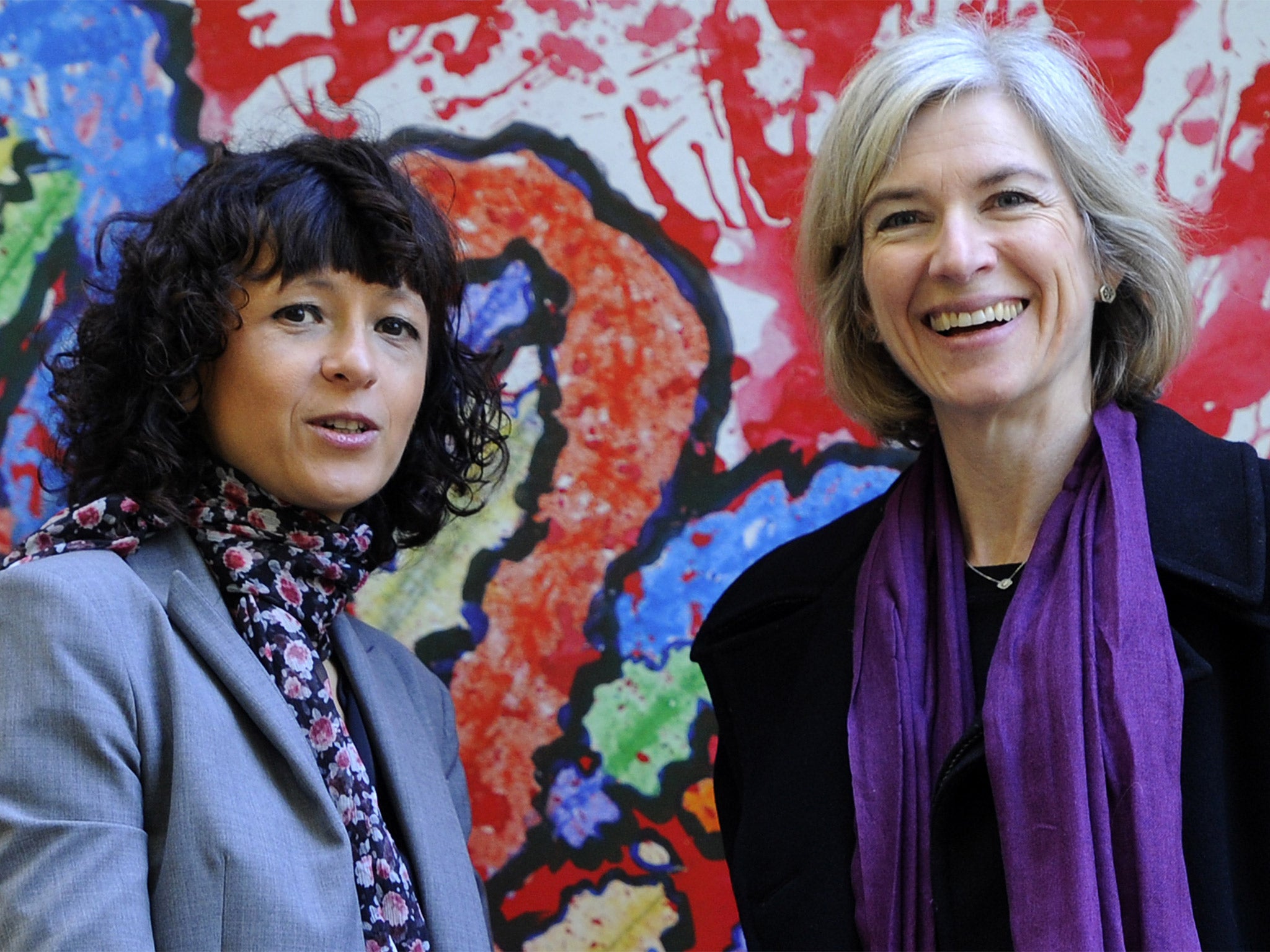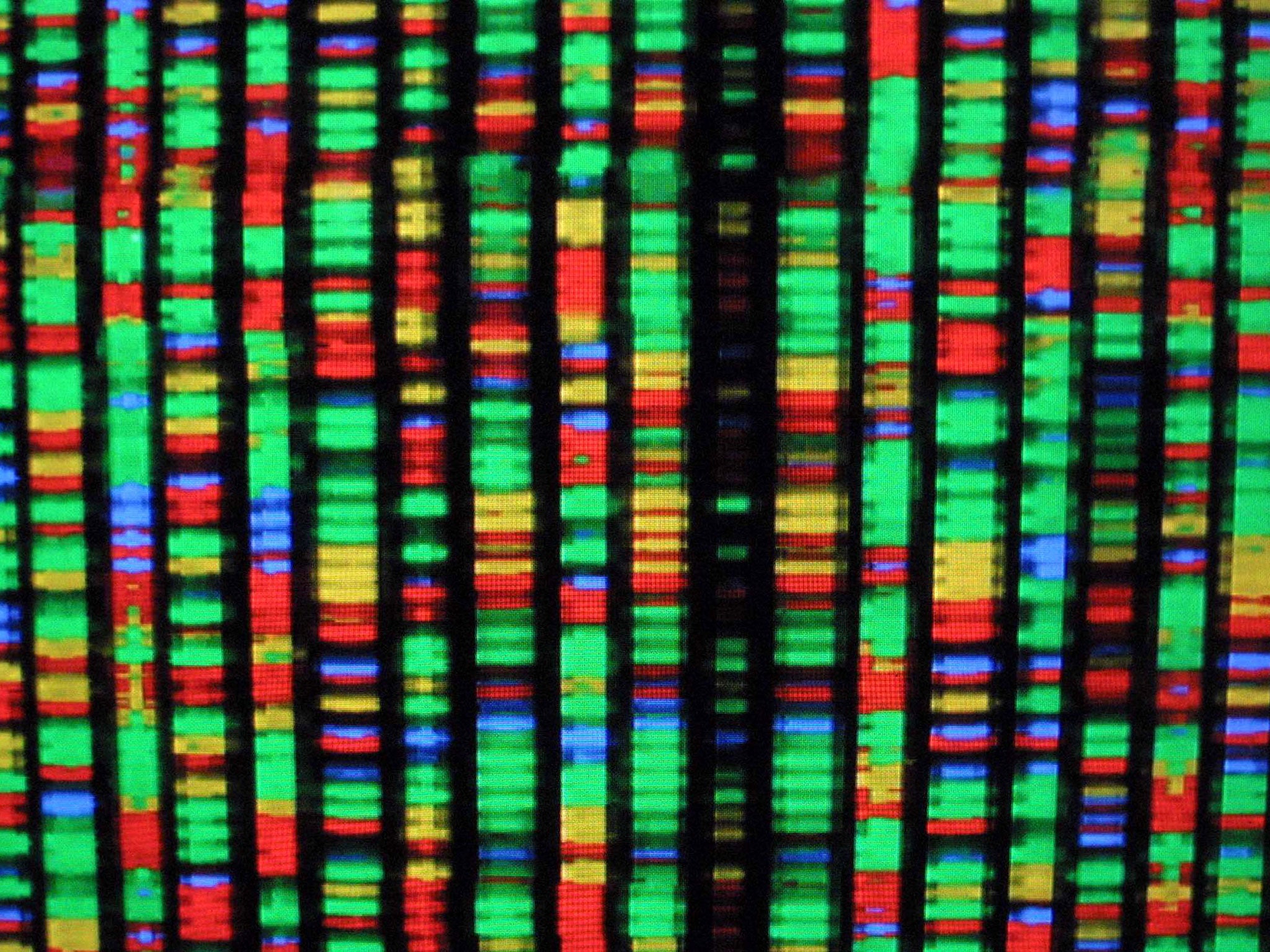Crispr-Cas9: Bitter row breaks out over 'official history' of gene-editing breakthrough
The two main protagonists are both giants in their respective fields

Your support helps us to tell the story
From reproductive rights to climate change to Big Tech, The Independent is on the ground when the story is developing. Whether it's investigating the financials of Elon Musk's pro-Trump PAC or producing our latest documentary, 'The A Word', which shines a light on the American women fighting for reproductive rights, we know how important it is to parse out the facts from the messaging.
At such a critical moment in US history, we need reporters on the ground. Your donation allows us to keep sending journalists to speak to both sides of the story.
The Independent is trusted by Americans across the entire political spectrum. And unlike many other quality news outlets, we choose not to lock Americans out of our reporting and analysis with paywalls. We believe quality journalism should be available to everyone, paid for by those who can afford it.
Your support makes all the difference.A bitter disagreement has broken out between leading scientists over an “official” history of one of the most important breakthroughs in genetics in the past 20 years – a technique that allows researchers to edit the human genome with exquisite precision.
The two main protagonists are both giants in their respective fields, and their American research institutions are involved in a high-profile patent dispute over who owns the multi-million-dollar rights to the gene-editing technique Crispr-Cas9, which exploded on to the scene just three years ago.
However, what started as an arcane legal argument has now turned deeply personal with one of the scientists claiming that the other has made factual mistakes in a peer-reviewed scientific paper that was supposed to be an accurate and balanced portrayal of the discovery of Crispr-Cas9.
Professor Jennifer Doudna of the University of California, Berkeley, said that she is so concerned about the factual inaccuracies that she and her colleagues intend to respond in writing to the “Perspective” article published in the journal Cell by Eric Lander, director of the Broad Institute of the Massachusetts Institute of Technology and Harvard University.
“Dr Lander shared only a small excerpt of his article with me before publication, and declined to say where the piece would be published or to provide the complete draft of the text,” Professor Doudna wrote in an email to The Independent.

“I did not have a chance to read or provide comments on many sections describing my lab’s research and interactions with colleagues, and those descriptions are factually incorrect. I expect the United States Patent and Trademark Office will resolve these issues in due course,” she said.
“I and my colleagues plan to respond in the near future,” she added.
Dr Lander, a highly influential scientist in the US, was head of the human genome project and is co-chair of a high-level scientific committee advising President Obama. His “take” on the history of Crispr will therefore be seen as important when it comes to deciding who deserves a Nobel Prize for the discovery – and few doubt that Crispr deserves one.
In a statement to The Independent, Dr Lander said that he asked Professor Doudna to fact-check material he sent to her to correct or improve it.
“In her reply, she confirmed the information about her personal background, but said she did not wish to comment in any way on historical statements about the development of CRISPR technology. In writing the article, I received input about the development of CRISPR from more than a dozen scientists around the world. Dr. Doudna was the only one who declined, which is unfortunate,” Dr Lander said.
In addition to antagonising Professor Doudna, however, Dr Lander has also upset Emmanuelle Charpentier, now director of the Max Planck Institute for Infection Biology in Berlin, who briefly collaborated with the Doudna lab on key Crispr discoveries involving the Cas9 gene-splicing enzyme.
“I regret that the description of my and [my] collaborator’s contributions is incomplete and inaccurate. The author did not ask me to check statements regarding me or my lab. I did not see any part of this paper prior to its submission by the author. And the journal did not involve me in the review process,” Professor Charpentier wrote in an on-line comment to Lander’s article in Cell.
However, Dr Lander responded: “Following up on a discussion with Dr Charpentier about her work in May, I met with her in early December to review facts about her work when we were both at a meeting together. She was very helpful in clarifying details of her work and subsequently emailed with additional details.”
Experts in the field have suggested that Professor Lander has downgraded the achievements of Charpentier and especially Doudna, who is mentioned almost in passing in one or two paragraphs, while Feng Zhang, a scientist working on Crispr at Professor Lander’s own Broad Institute, is allotted a full page of the eight-page history in Cell.
The article, called “The Heroes of Crispr”, also suggests that Doudna required the “assistance” of a Harvard University researcher, George Church, to get an aspect of the Crispr technique to work. Meanwhile, Zhang is given lengthy praise for his efforts to refine the gene-editing process into something practical that works reliably in human cells, which Zhang and the Broad Institute have successfully patented – although that is now subject to a legal dispute.
Meanwhile, commentators have criticised Dr Lander’s alleged slant towards the Broad work at the apparent expense of Doudna’s at UC Berkeley.
“A research paper as riddled with false statements as Lander’s ‘Heroes of Crispr’ would be retracted – it too should be retracted,” tweeted Michael Eisen, a UC Berkeley biologist who was so incensed by the anti-Doudna tone of Lander’s article that he denounced it on Twitter as “science propaganda at its most repellent”.
Meanwhile, Nathaniel Comfort, a science historian at Johns Hopkins University School of Medicine in Baltimore, said that Professor Lander has written a “Whig history” of Crispr, which, like the protestant historians’ biased accounts of English history, tends to present events from one particular standpoint, in this case that of the Broad Institute.
“When that history is written by an individual who has much to gain by the acceptance of his own account, the piece should come with a conflict-of-interest statement – or at least a road-sign reading, ‘danger! Whig history ahead,” Mr Comfort said.
Joseph Caputo, a spokesman for Cell, said that conflict-of-interest statements only concern personal financial conflicts, which did not apply to Dr Lander.
Mr Caputo added: “Dr Lander confirmed that he sought input from each scientist about the discussion of their work. The peer reviewers were also asked to comment on balance and fairness and any comments they provided back were addressed in revision.”
Patently misleading: Crispr court battle
The patent dispute over the gene-editing technique Crispr-Cas9 has focused on the research of Feng Zhang at the Broad Institute in Massachusetts, and Jennifer Doudna of the University of California, Berkeley, working with Emmanuelle Charpentier.
Although Doudna and UC Berkeley applied for Crispr patents before Zhang and the Broad Institute, the US Patent and Trademark Office has quietly awarded Zhang something like 13 out of 20 patents, while Doudna and Charpentier have been left largely empty-handed when it comes to protecting their intellectual property, which could be worth hundreds of millions of dollars for their research institutes.
However, the dispute has only just begun. In December, UC Berkeley successfully convinced the patent office to allow “patent interference”, which essentially means the dispute is now kicked upstairs for a higher court to resolve – a process that could take years.
Scientists’ rows: Who really discovered HIV?
Great discoveries in biology are often linked to great amounts of money, as well as the greatest prizes in science. This is as true now with Crispr-Cas9, the gene editing technique that is revolutionising genetics, as it was with the discovery of the human immunodeficiency virus (HIV), the virus that leads to Aids.
In the early 1980s, two teams of scientists, one based at the US National Cancer Institute in Washington DC and the other at the Pasteur Institute in Paris, fought a protracted legal battle over who was first is discover the virus.
Central to the resolution of this bitter dispute was an official “history” of who did what and when.
Under pressure from the scientific and political establishment, the heads of the two institutes, Robert Gallo and Luc Montagnier, sat down to write a joint history which conveniently agreed on almost equal contributions to the discovery – which meant the patent rights on the HIV blood test were also shared equally.
However, this official history did not seem to help Dr Gallo when it came to the 2008 Nobel Prize in Medicine or Physiology, which was jointly awarded to Dr Montagnier and his long-time colleague at the Pasteur, Francoise Barré-Sinoussi.
Join our commenting forum
Join thought-provoking conversations, follow other Independent readers and see their replies
Comments